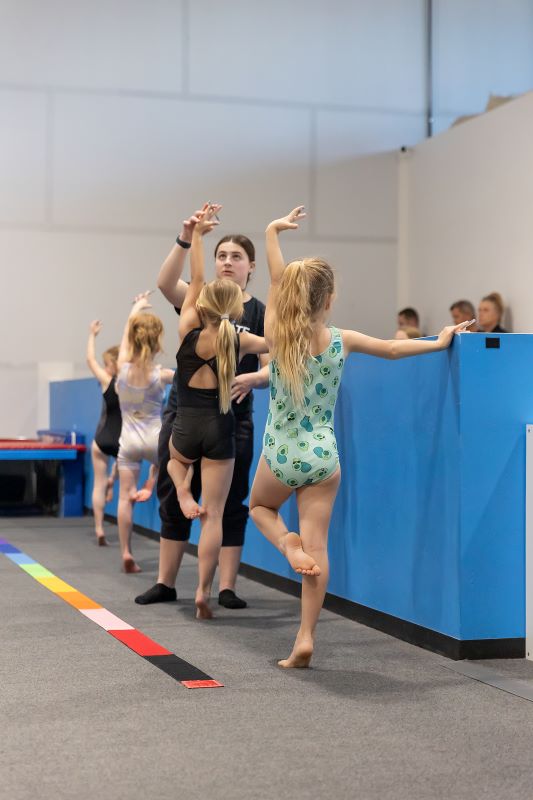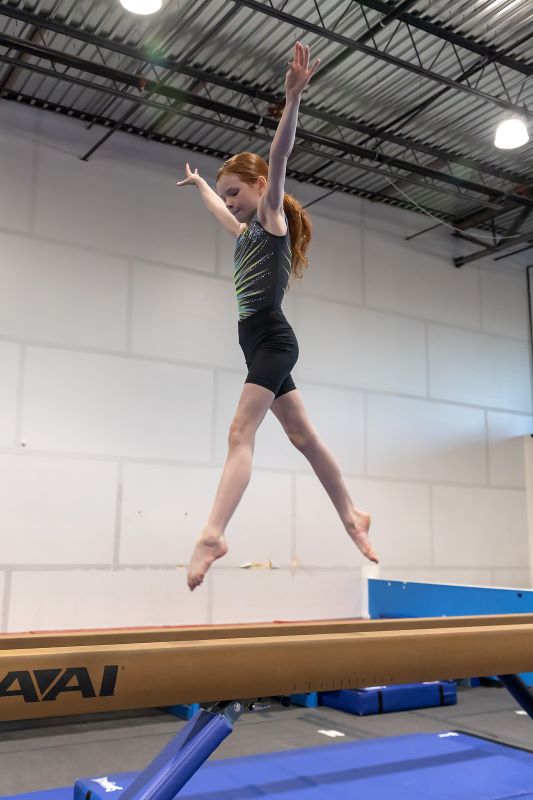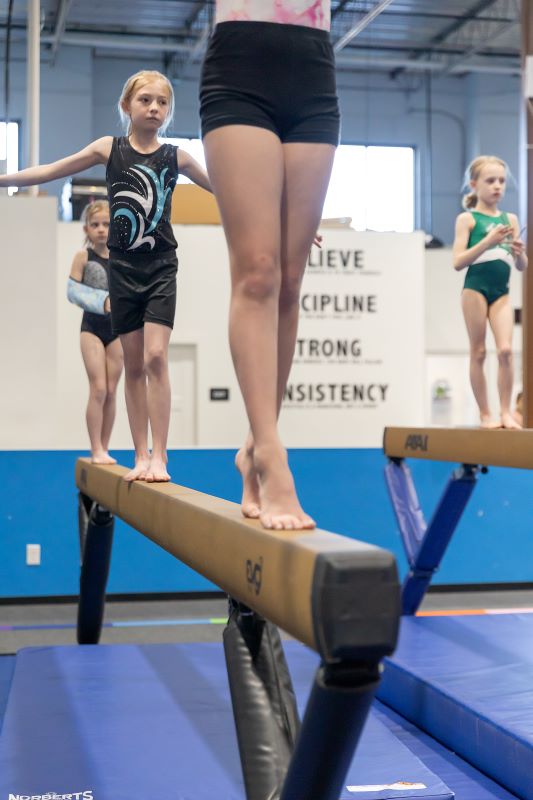Gymnastics is known for its flips, leaps, and impressive acrobatic skills. But what truly sets a great routine apart is the artistry behind each movement. While strength and technique are essential, it’s the style and expression that bring the performance to life.
Artistry is what connects one skill to the next. It’s how a gymnast moves with purpose, shows confidence, and captures the attention of the audience and judges. A routine that flows beautifully stands out far more than one that simply checks off a list of skills.
In this blog, we’ll take a closer look at what artistry really means in gymnastics, how it affects performance and scoring, and how gymnasts of all ages can improve it. While artistry is most visible on floor and beam, it plays a role in every part of the sport.
What Is Artistry in Gymnastics?
Artistry in gymnastics refers to the expressive, graceful, and controlled aspects of a routine. It’s more than just completing a skill. It’s about how that skill is performed and how the gymnast moves from one element to the next.
Key Elements of Artistry:
- Strong body lines and good posture. Think pointed toes, extended arms, and an open chest.
- Dance and transition elements that feel smooth and intentional.
- Confident facial expressions and eye contact with the judges or audience.
- Timing and rhythm that make the entire routine feel connected and polished.
Artistry matters because judges aren’t just scoring the flips and tricks. They’re evaluating the full performance. A gymnast might hit every skill, but if the routine is rushed or stiff, points will be lost. On the other hand, a gymnast with strong expression and flow can make even simpler skills look beautiful and score well because of how they’re presented.

Where Artistry Matters Most: Floor and Beam
Floor Routines
The floor is where artistry truly shines. Gymnasts perform to music, using choreography to connect their tumbling with expressive dance. The goal is to tell a story or match the energy of the music while maintaining technique and control.
Judges pay close attention to:
- How well the choreography matches the music.
- Whether the transitions between tumbling passes feel smooth and confident.
- The gymnast’s facial expression, posture, and ability to stay engaged throughout the routine.
- How the gymnast carries themselves and expresses the rhythm of the routine.
Without artistry, even the most powerful tumbling passes can feel disconnected. When a gymnast performs with confidence and expression, the routine feels complete and memorable.

Beam Routine
Artistry on beam is more subtle, but just as important. The beam is one of the most challenging events, requiring intense focus, balance, and control. Gymnasts who move gracefully and calmly appear more confident, even if they’re nervous on the inside.
Artistry on beam includes:
- Smooth transitions between skills without hesitation or choppy movements.
- Elegant poses, turns, and dance sequences that add to the routine’s overall style.
- Controlled pacing that shows poise and confidence from start to finish.
When a gymnast moves too quickly or appears tense, it disrupts the flow and can lead to deductions. Good artistry can help the gymnast appear more composed and can even draw attention away from minor mistakes.
How Artistry Affects Scoring
In many levels of gymnastics, artistry is part of the overall execution score. Judges are not only looking for clean landings and proper form, but also how the gymnast performs as a whole.
Some common deductions related to artistry include:
- Lack of expression or energy.
- Rushed or choppy transitions between skills.
- Unfinished movements such as flexed feet or bent arms.
- Poor posture or a lack of presence throughout the routine.
While technical difficulty matters, a routine that flows smoothly and shows personality can often score higher than a routine filled with harder skills but lacking in polish. Artistry can also help cover small errors and create a better overall impression.

How to Improve Artistry in Gymnastics
Artistry isn’t something you’re either born with or not. It’s a skill that can be developed with practice and intention. Here are a few practical ways gymnasts of all ages can improve their performance quality:
- Work on Presentation
Keep your chin lifted, extend your arms, and finish every movement with purpose. Express confidence in how you move. - Practice in Front of a Mirror
Watch how your body moves through dance sequences and transitions. Make sure everything feels connected and clean. - Choreograph Transitions
Don’t let the moments between skills feel like filler. Use purposeful movement and clean choreography to connect each part of your routine and keep the performance flowing. - Use Facial Expressions
Practice smiling or showing intensity during routines. The more you practice this, the more natural it will feel. - Watch Yourself on Video
Review your routines to spot stiff areas or rushed movements. Look for moments where you could slow down, add expression, or clean up transitions. - Train With Music
Especially on floor, practicing with your music helps you stay on beat and match your movement to the rhythm. - Take a Dance Class
Ballet, jazz, or even hip hop can help with body awareness, posture, and style. Dance improves how you move and helps you connect skills with grace.

Encouraging Artistry at Every Level
Artistry isn’t just for elite gymnasts. Every athlete, even beginners, can benefit from learning how to move with confidence and expression. At Elevate, we encourage gymnasts to explore their personal style, whether they’re in preschool classes or advanced rec levels.
Coaches regularly include movement drills, posture exercises, and choreography in warm-ups and rotations. These help gymnasts build awareness and polish in their routines.
Conclusion
Artistry is what transforms gymnastics from a series of skills into a performance. While technique and strength are essential, it’s the rhythm, expression, and polish that make a routine stand out.
Floor and beam are where artistry plays the biggest role, but good performance quality benefits every gymnast on every event. Whether your child is just starting out or working on advanced skills, focusing on artistry can boost scores, build confidence, and create routines that are a joy to watch.
So as your gymnast continues to grow, remind them it’s not just what they do, but how they do it. We blog this guide was a useful resource wherever you find yourself in your gymnastics journey.
Try it FREE!
We offer one free trial class to all students who are interested in our programs. From NinjaZone to Tumbling, give one of our classes are shot. After all…. it’s FREE!
